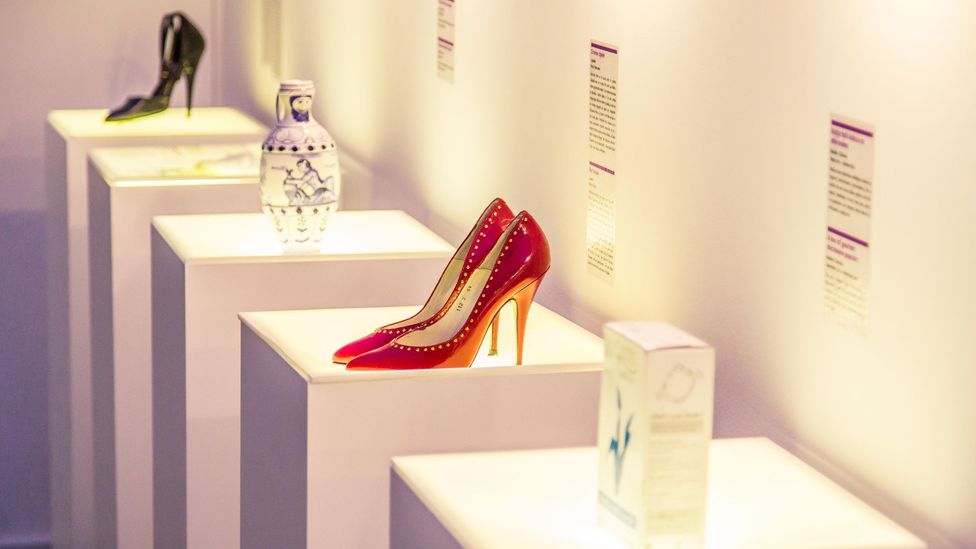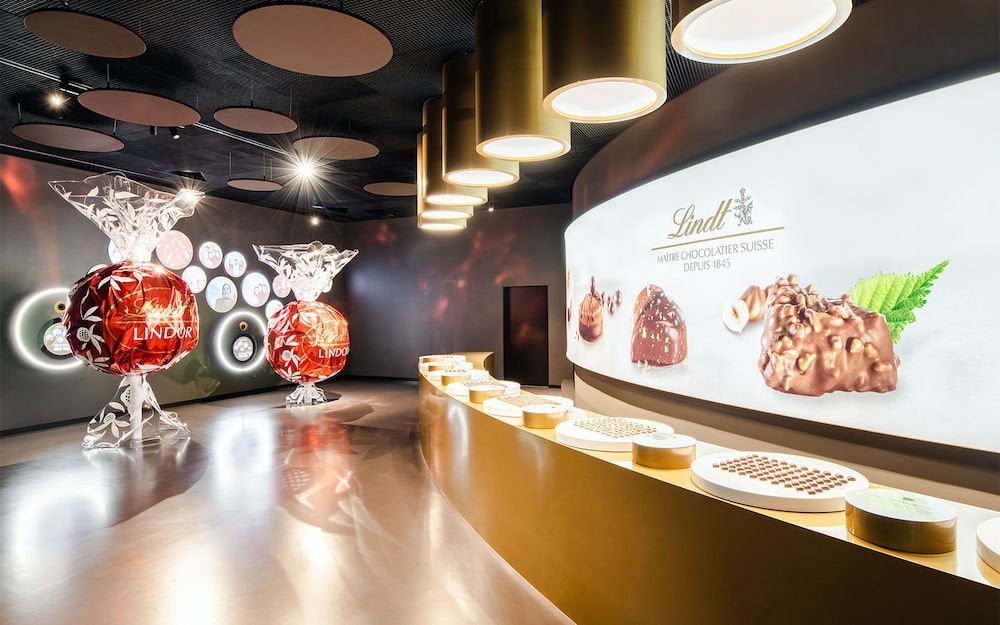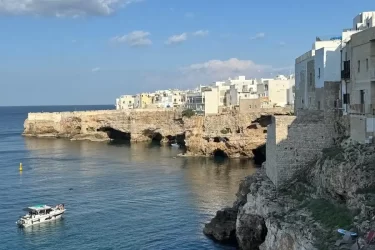World’s Most Unique Museums
Every country you visit should include a museum visit.
While most people flock to Lourve for Leonardo da Vinci’s Mona Lisa and The Museum of Modern Art for Van Gogh’s The Starry Night, if you’re looking for something off-the-beaten-path to include on your bucket list, you’ll be happy to know that there are a lot of other interesting museums out there that guidebooks won’t tell you about.
Say goodbye to crowds and bring your cameras on your next trip because we’ve compiled a list of the world’s most unique museums for you to visit.
#1 Cup Noodles Museum, Japan

There are two cup noodles museums in Japan, but the one in Osaka is our favorite because it is the birthplace of instant noodles. Momofuku Ando invented the first instant noodles (chicken ramen) in 1958, after a year of research in his backyard in Osaka. Since then, cup noodles have been invented, and instant noodles have become popular all over the world. Because of his inventiveness, the museum wants visitors to understand the value of ingenuity through the discovery and history of instant noodles.
The museum is the only place in the world where you can make your own cup noodles. A recreation of Ando’s work shed is on display at the museum as a result of his invention. A colorful exhibition of instant noodles is also on display, demonstrating the product’s global popularity. At the Instant Noodles Tunnel, a line of instant noodles boasts 800 product packages, growing into a global dietary culture.
#2 The Museum of Gold, Colombia

The Museum of Gold, also known locally as El Museo del Oro, is perhaps Colombia’s most famous tourist attraction, attracting half a million visitors each year. The museum is also one of the most fascinating places in South America to visit. More than 55,000 pieces of gold and other materials from Colombia’s pre-Hispanic culture are displayed in three floors of themed rooms.
The majority of the exhibits are made of gold, but there are also pottery, stone, shell, wood, and textile objects. The Musica Raft is the museum’s most famous exhibit due to its connection with the legend of El Dorado, which people mistakenly believe refers to the mythical city of gold but actually refers to a mythical tribal chief of the Muisca people known colloquially as The Golden Man. The famous relic is a miniature replica of the Golden Man.
#3 International Spy Museum, USA

The International Spy Museum provides an engaging glimpse into the world of espionage and intelligence. The museum aims to allow understanding of the important role that intelligence has played in history and its use today, which is often a topic shrouded in secrecy.
The exhibits are divided into different categories, including an interactive exhibition called Operation Spy, where you can take on the roles of secret agents and participate in an hour of spy stimulation.
The lipstick pistol, also known as the “kiss of death,” was used by KGB femme fatales during the Cold War, as well as the Minox spy camera and the Aston Martin DB5, which appeared in the 1964 James Bond thriller Goldfinger.
#4 The Dog Collar Museum, United Kingdom

The Dog Collar Museum is a must-see for dog enthusiasts. The museum, which is housed within Leeds Castle, is the world’s first of its kind. The collection has been on display in the castle’s former stable since 1976. The earliest of the 130 rare and valuable collars on display, a Spanish iron herd mastiff’s collar, dates from the late 15th century.
Other collars include spiked iron collars from the 16th century Germany and ornate gilt collars from the Baroque period. A large portion of the collection belonged to Gertrude Hunt and was displayed in memory of her husband, historian John Hunt. The couple was an avid collector of various items, but dog collars were perhaps the most special among them.
#5 Cancun Underwater Museum of Art, Mexico

The Cancun Underwater Museum, also known as the Museo Subacuático de Arte (MUSA) in Mexico, claims to be the world’s largest underwater museum. This underwater paradise, nestled between the islands of Cancun and Isla Mujeres, attracts nearly 750,000 tourists each year.
The museum, which houses 500 sculptures, the majority of which are by British sculptor Jason deCaires Taylor and the remainder by local Mexican sculptors, serves as a destination for divers, which helps to preserve the nearby coral reefs—a vision that the founders desired.
The exhibits depict a variety of themes ranging from capital greed to the lives of fishermen, with notable examples including Inertia, The Banker, and Understanding. The tours are divided into two parts: snorkeling at Punta Nizuc and scuba diving at Manchones.
#6 The Mummy Museum, Mexico

This museum in Mexico, also known as Museo de las Momias de Guanajuato, houses mummies. Because the mummies on display were naturally mummified, they appear a little grimmer than the mummies excavated in Egpyt. The mummification process was most likely caused by a combination of altitude and the arid climate of the area, which caused the wooden coffins to absorb moisture. The crypts are also cement-sealed, which keeps the bodies from decaying.
Because a large number of mummies discovered at the site became popular, the museum was established to display them to the general public. The museum houses over a hundred mummies, the majority of whom lived in Guanajuato between 1850 and 1950. The museum also has the world’s smallest mummy on display.
#7 The Museum of Bread Culture, Germany

You might get hungry after visiting this museum. The museum is dedicated to bread and aims to showcase the 6,000-year-old history of bread as an indispensable part of human culture and civilization. It was founded in 1955. Its first permanent exhibition was in 1960, and it is the world’s first museum of its kind. Later, the museum relocated to Salzstadel, a historic warehouse in Ulm, Germany.
Over 18,000 objects are housed in the museum, 700 of which are on permanent display. The exhibits serve to highlight the significance of bread in society. It also depicts various bread-making methods and how they have evolved over time. Despite this, actual bread is not included in the exhibition because the founders believe that bread is a food that should be freshly baked every day, rather than an artifact.
#8 Micropia, Amsterdam

Given the times we live in, a trip to Micropia might be worthwhile to learn more about microbes. The only museum of its kind, Micropia in Amsterdam, aims to provide a positive view of microbes, which are normally associated with diseases but actually play an important role in daily human life.
Similarly, the museum hopes to stimulate the general public’s interest in microbes from an early age. The exhibits are divided into several categories, the most important of which are fermentation, viruses, and vaccines.
One of the most notable exhibits is “Mouth to Mouth,” which explains how many microbes are passed on when people kiss. Another distinguishing feature of the museum is its location—Ledenlokalen, a major historical monument that has been converted into a modern museum.
#9 The Museum of Broken Relationships, Croatia

If you’ve had your heart broken or are simply lovesick, The Museum of Broken Relationships is the perfect companion to your pain. The museum began as a traveling collection of donated items, but it now has a permanent home in Zagreb, Croatia. The museum is dedicated to failed love relationships, as the name implies.
The exhibits are mostly personal items from former lovers, with a brief description, sometimes telling the item’s story. The museum was inspired by a Zagreb-based couple, Olinka Vitica and Draen Grubii, who joked about establishing a museum to house their leftover personal items after their breakup as a way to remember and honor their memories together. The joke became a reality, and the museum was born.
#10 Lindt Home of Chocolate, Switzerland

Lindt Home of Chocolate in Switzerland will introduce you to the delectable world of chocolate. The museum houses the world’s largest Lindt chocolate shop and a magnificent nine-metre-tall Lindt chocolate foundation with 1,500 kilograms of chocolate flowing through it. There are also interactive chocolate tours that introduce you to the Swiss chocolate cultural heritage.
If you like chocolate, this is the place to be because you can make your own with the help of Lindt master chocolatiers. You can try some savory meals and snacks at the cafe, which is a great excuse to get dessert afterwards. If you have a sweet tooth, you must visit this museum.

















